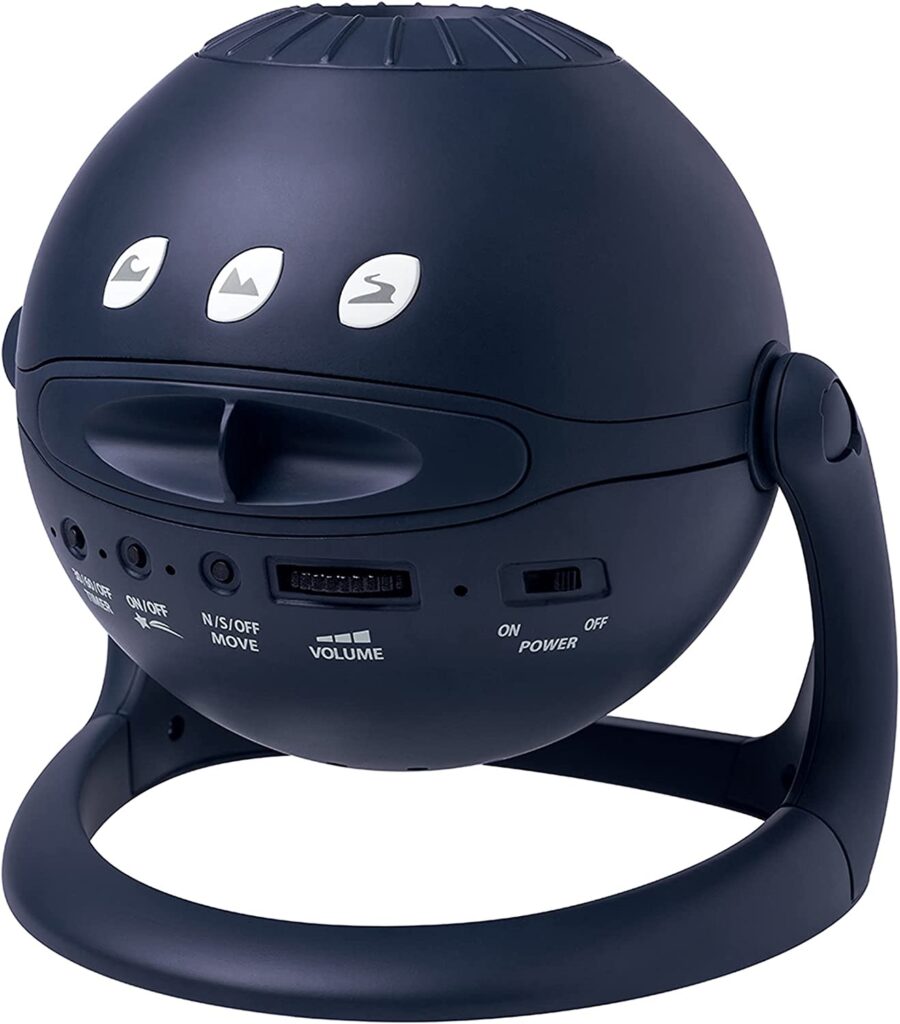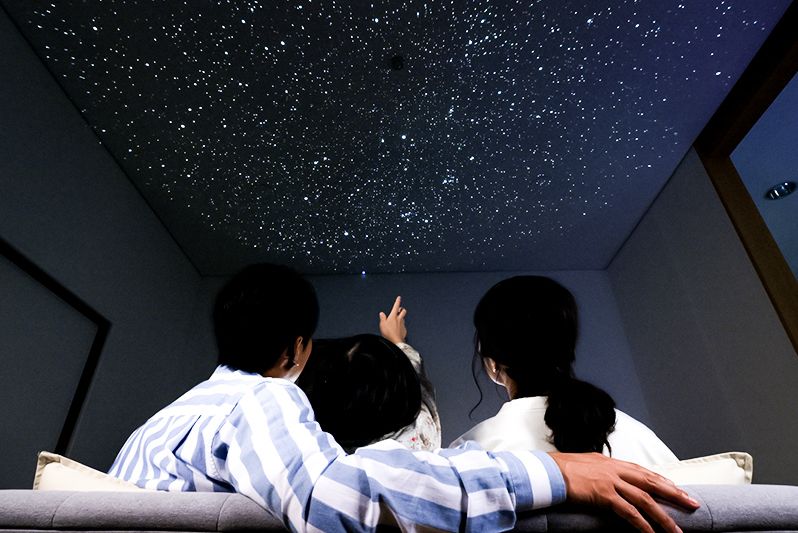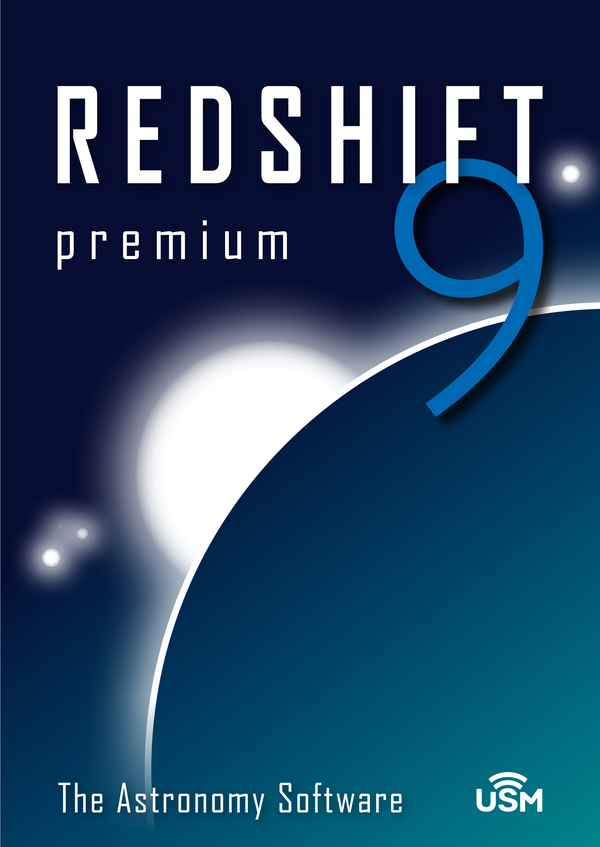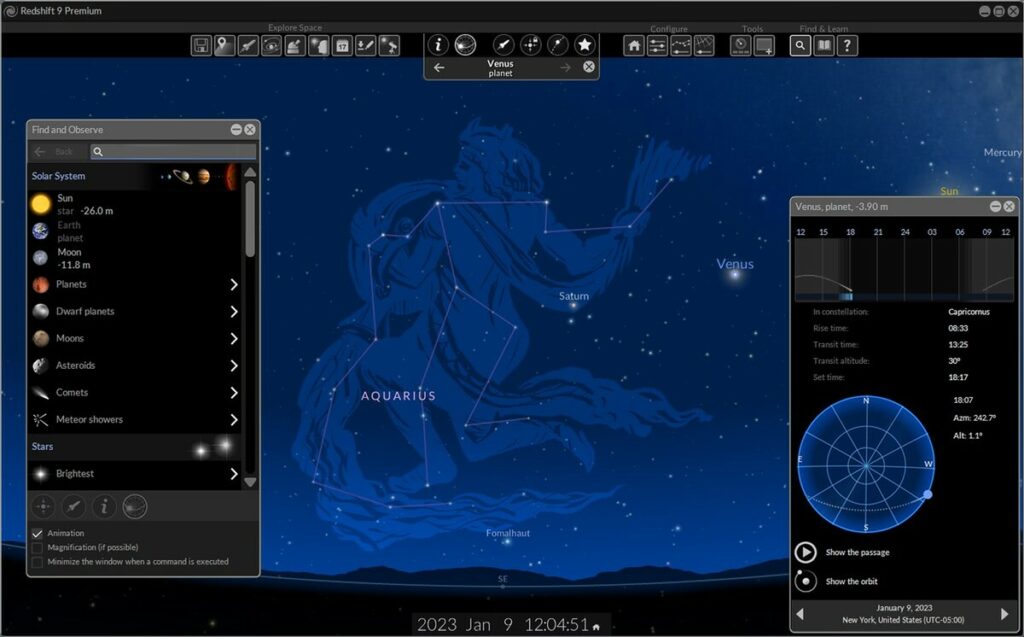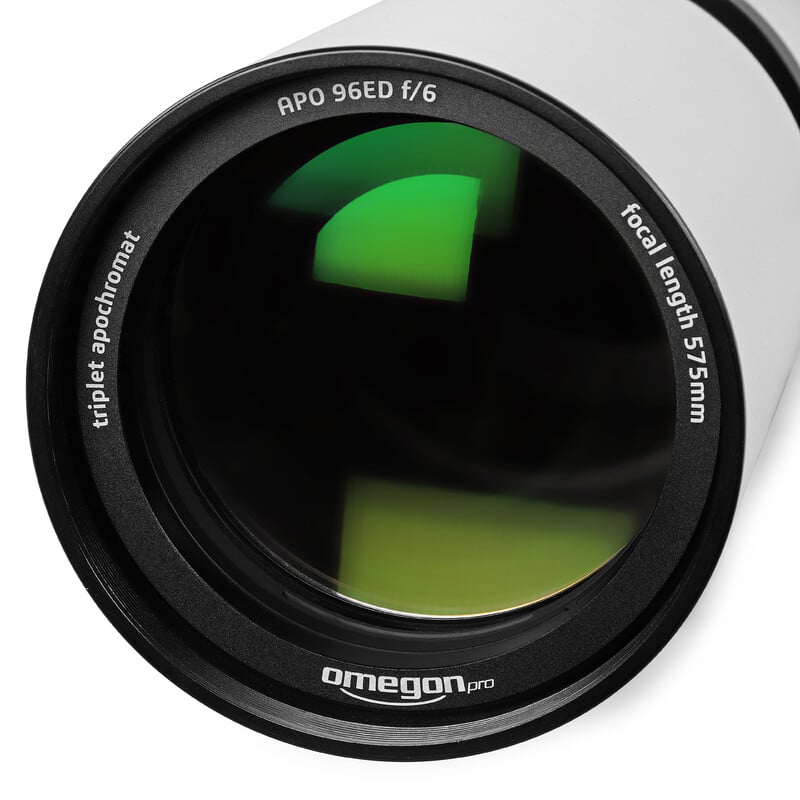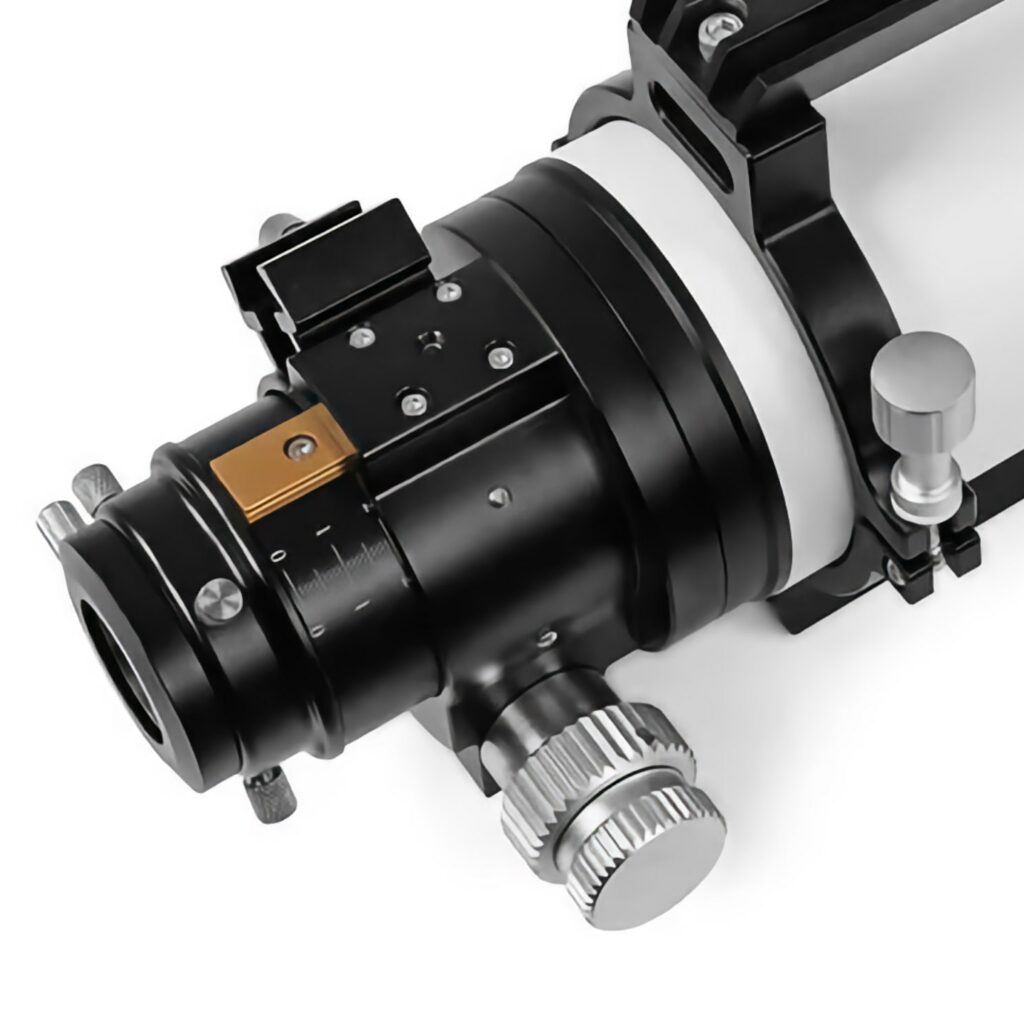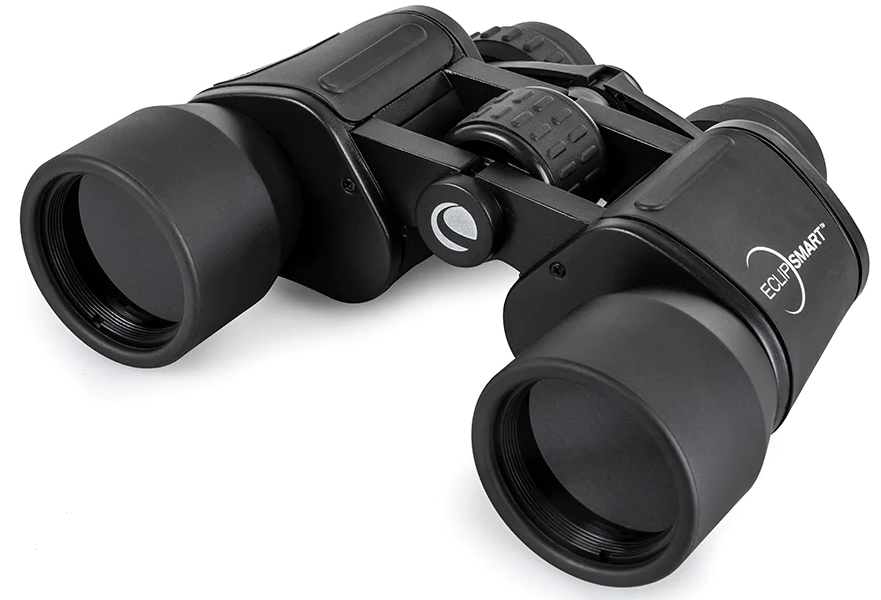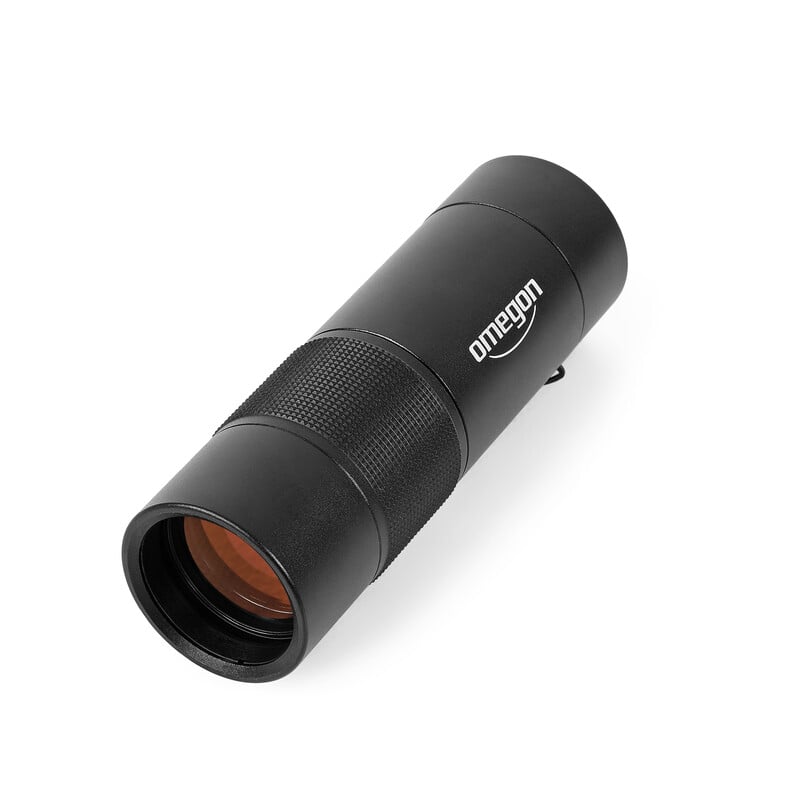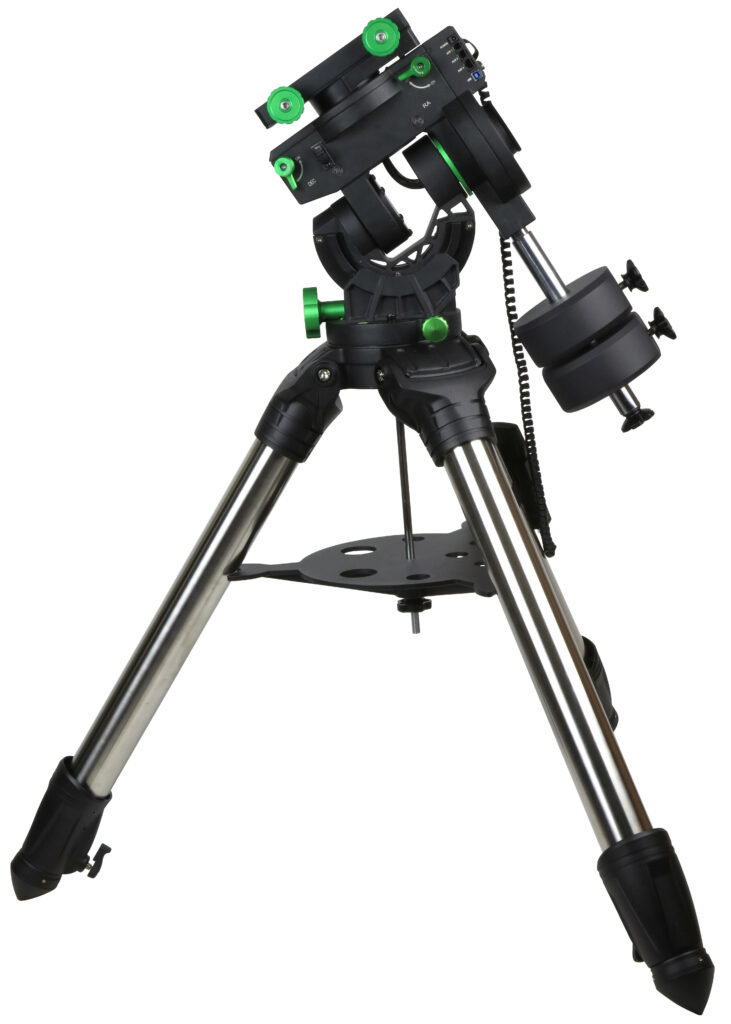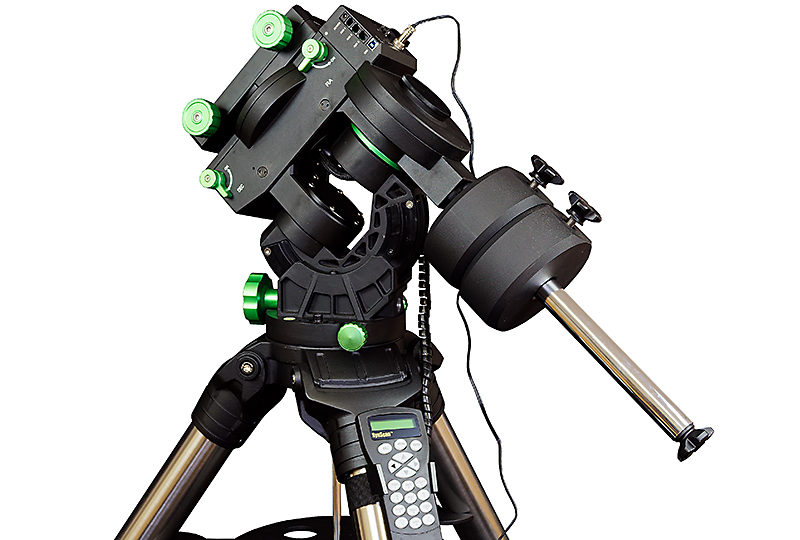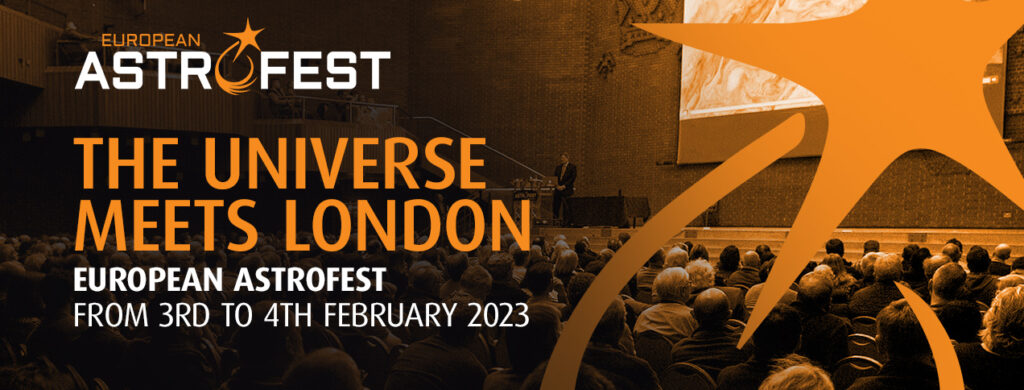Spring is a great time to take a look at the stars: it’s getting warmer, and the weather in Central Europe is better. And, as always, there are plenty of interesting celestial events to see: a minor planet at opposition, the only time the planet Mercury is visible in the evening, and some beautiful conjunctions between planets and the Moon. In this infographic you’ll learn about the top astronomical events in the night sky during the spring of 2023. There’s no better reason to get outdoors again with your binoculars or telescope.
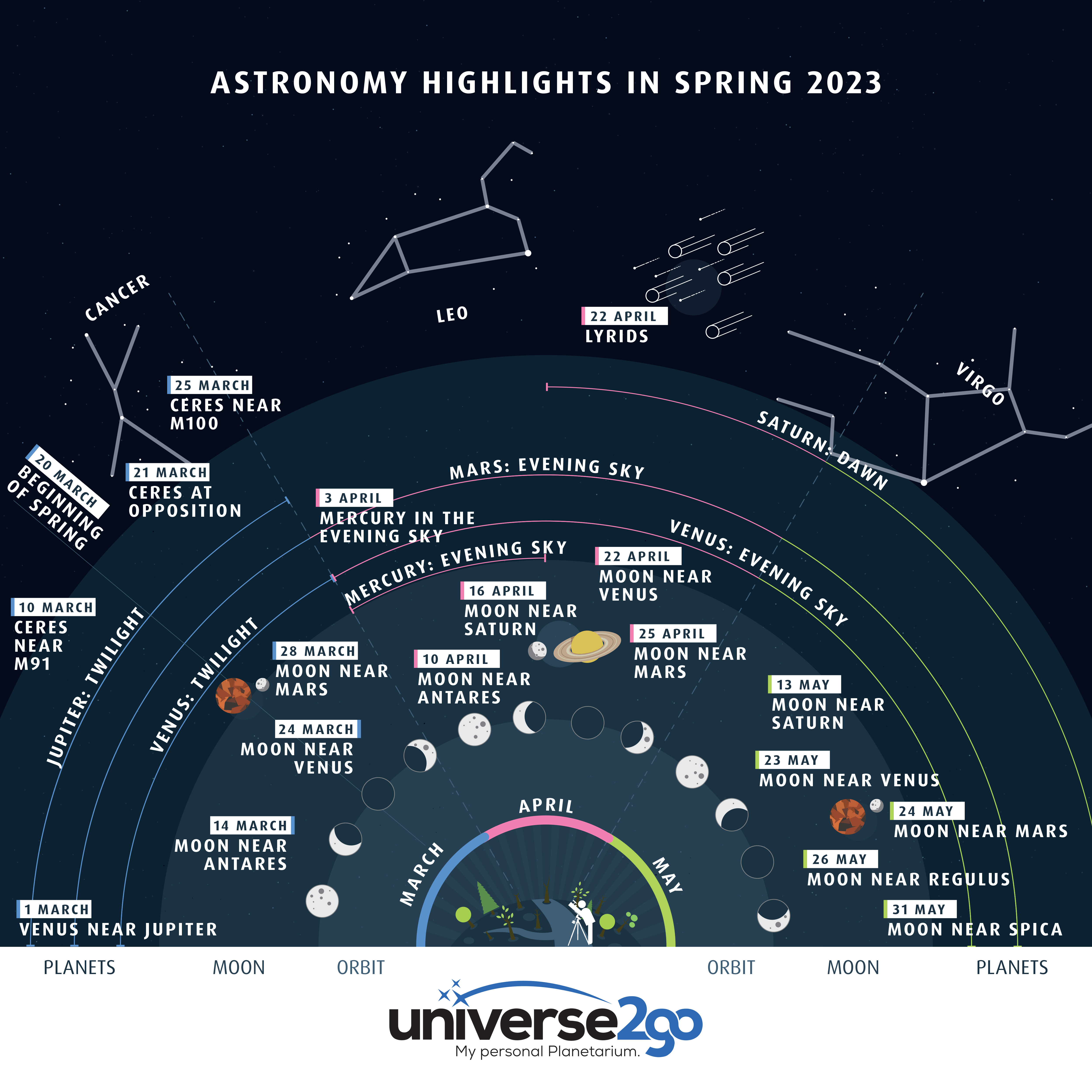
Events in March
01/03 Conjunction between Venus and Jupiter
On 1 March, you can observe a very special astronomical event: at dusk, Venus and Jupiter draw closer to one another, until they are around a half a degree apart. This is approximately the same distance as the diameter of a full Moon. The encounter is a rare opportunity to marvel at these two bright celestial bodies in the evening sky.
10/3 Ceres near M91
Today Ceres intersects the bright spiral galaxy known as M91, thereby offering us the rare opportunity to admire both the minor planet and the galaxy simultaneously with our telescope. Ceres is the largest object in the asteroid belt between Mars and Jupiter.
The planet has a diameter of around 950km which is about the length of Spain. Ceres was considered to be a planet following its discovery in around 1801, and it was only later re-defined as a minor planet. Ceres thus faced a very similar fate in its classification as Pluto did in 2006.
A closer inspection by the Dawn Spacecraft discovered many craters, most of which are only small. Water vapour was even discovered there in 2015, and further research suggested that there may be liquid water under the surface. So, we can say with certainty: it’s a very interesting celestial body! Use your telescope to enjoy the rare sight of Ceres and M91 together!
14/03 Conjunction between the Moon and Antares
Today is a good day for early risers: the Moon nears Antares, the brightest star in the constellation of Scorpio, at a distance of just 1.5 degrees. You can only observe and enjoy the meeting of these two in the morning hours. So, maybe on your way to work?
21/03 Ceres at opposition
Have you ever observed a minor planet? Ceres, which was discovered in 1801, is the largest object in the asteroid belt. It’s at opposition now, and its brightness reaches a magnitude of 7. You can locate it with small telescopes and, theoretically, even with binoculars. Have fun!
24/03 Conjunction between the Moon and Venus
The delicate sickle Moon rises above the western horizon, serving as the perfect complement to gleaming Venus. With a brightness of magnitude 4, Venus is a wonderful sight at dusk and will entice you outside to look at the stars tonight. Less than 3 degrees separate these two celestial bodies, which guarantees a particularly beautiful sight. It’s always an impressive natural wonder when the Moon meets Venus, especially if you’re planning to capture it with your camera.
25/03 Conjunction between Ceres and M100
Make a note of date: the minor planet Ceres crosses another deep sky object! Its path takes it past the breath-taking galaxy M100 in the constellation of Coma Berenices. Using a finderscope, you can locate it above Denebola, the star that marks the tail of the constellation of Leo.
28/03 Conjunction between the Moon and Mars
Tonight, the Moon and the planet Mars can be found very close together. Observing these two celestial bodies framed by the stars of the Winter Hexagon is a truly impressive sight.
Events in April
03/04 Mercury in the evening sky
Mercury is a nimble planet as its orbit is located close the Sun. This usually makes it difficult to observe, because it only rarely escapes the brightness of our central star. The only evening visibility this year occurs in April: Mercury reveals itself a few degrees above the western horizon between 3 and 15 April.
10/04 Conjunction between the Moon and Antares
Tonight, the Moon is in the constellation of Scorpio and nears the bright supergiant star Antares. This occasion takes place in the morning hours. But a further event awaits us: the occultation of the magnitude 3 star by our Moon. At 04:52, the bright side of our satellite moves towards the star and occults it for around an hour. We will not be able to see the star’s reappearance on the other side of the Moon, as, by this time, it will already be daylight.
16/04 Conjunction between the Moon and Saturn
Keep an eye out if you’re an early riser: this morning we are greeted by the waning crescent Moon and the planet Saturn above the eastern horizon. You’ll need to choose a place with a good view of the horizon to observe this.
22/04 Conjunction between the Moon and Venus
Tonight, we can observe a really special spectacle: a conjunction between the Moon and Venus. The Moon is just 2.5 days old, so we only see a slender sickle form. Venus, on the other hand, shines brightly at more than magnitude 4, so it appears especially bright in the evening sky.
22/04 The Lyrids
On 22 April, at its maximum, the Lyrid meteor shower produces up to 20 meteors per hour. The meteors can be observed undisturbed by moonlight during the best observation time which is between 22:00 and 04:00 next morning. Their point of origin, also known as the radiant, is located in the constellation of Lyra.
25/04 Conjunction between the Moon and Mars
Today, the Moon and Mars can be seen in the constellation of Gemini. This is a rare sight not to be missed.
Events in May
13/05 Conjunction between the Moon and Saturn
This morning the Moon nears the planet Saturn. Such a lovely sight is certain to get us motivated for the day ahead.
23/05 Conjunction between the Moon and Venus
Venus – almost as bright as a spotlight in the night sky – together with the slender crescent Moon. This is exactly what you will see if you look up at the sky this evening. What’s more: a little higher you’ll find Mars too. When compared to its two colleagues, it seems to be really dimly lit.
24/05 Conjunction between the Moon and Mars
Whereas the Moon visited Venus yesterday, today it is calling on the planet Mars.
26/05 Conjunction between the Moon and Regulus
If you have been observing the Moon in recent days, you will have noticed how quickly it moves against the background of stars. Today it meets Regulus, the brightest star in the constellation of Leo. The name Regulus comes from Latin and means ‘little king’.
31/05 Conjunction between the Moon and Spica
Today, the Moon meets the brightest star in the constellation of Virgo: Spica. We owe this coincidence to the path of the ecliptic, which repeatedly leads the Moon into the vicinity of this star. The best observation time starts in the late twilight, because Virgo will disappear below the horizon in the second half of the night.

